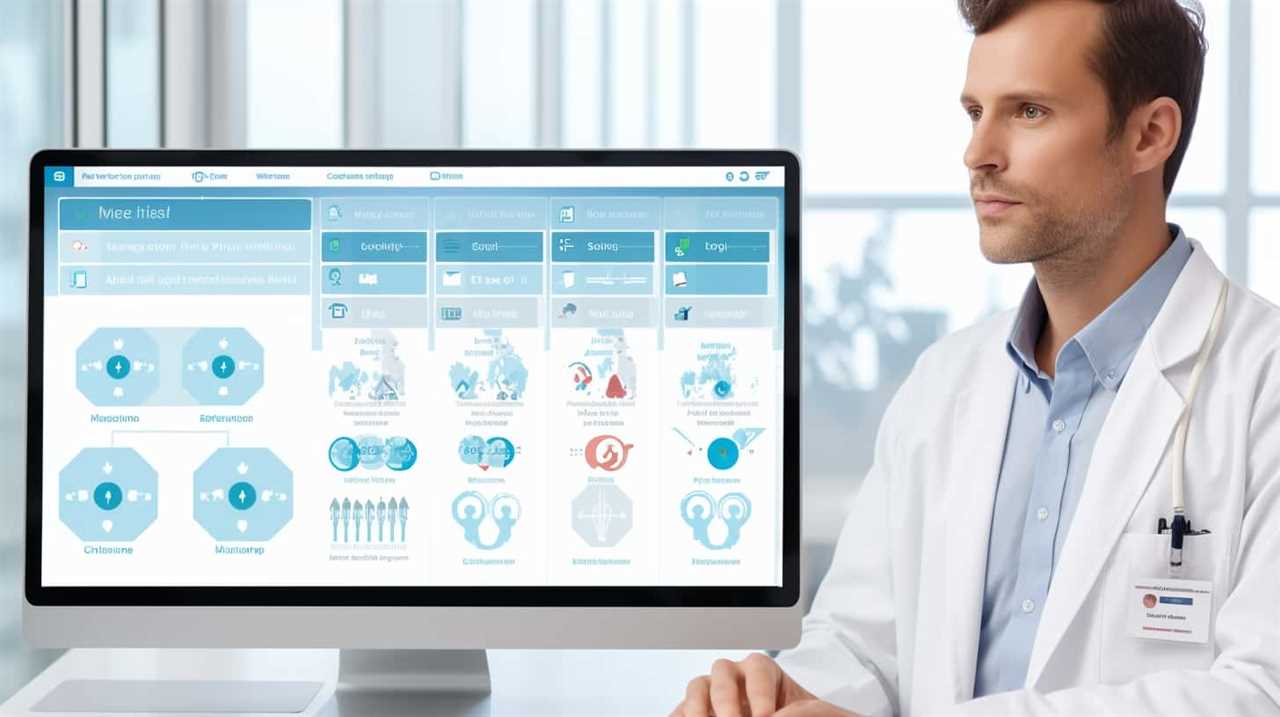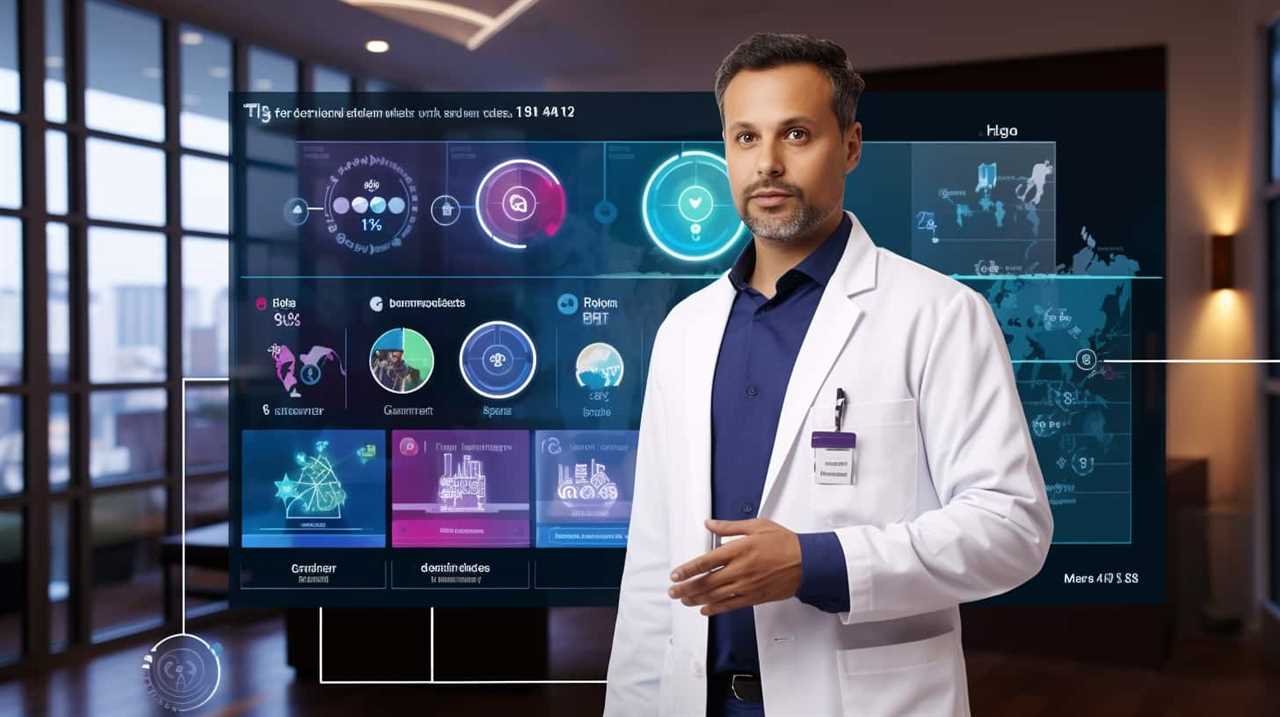Are you prepared to enhance your marketing automation?
We’ve got 9 essential tips to help you master marketing automation with machine learning.
From understanding the basics to optimizing customer segmentation, leveraging predictive analytics, and automating customer journey mapping, we’ll guide you through the process of using machine learning to enhance your marketing strategies.
Get ready to see measurable results and continuous improvement with these expert tips.
Let’s dive in!
Key Takeaways
- Machine learning has various applications in marketing automation, such as predictive analytics and recommendation systems.
- Choosing the right marketing automation platform is crucial, considering features, integration capabilities, scalability, and alignment with marketing goals.
- Proper data collection, cleaning, and feature engineering are fundamental for successful machine learning implementation in marketing automation.
- Implementing machine learning algorithms for personalization can drive customer engagement and boost conversion rates.

Understanding the Basics of Machine Learning
We begin by delving into the fundamentals of machine learning, focusing on the key aspects and principles that underpin its functionality. Understanding machine learning applications is essential for mastery in this field.
Machine learning is a branch of artificial intelligence that enables computers to learn from data without being explicitly programmed. It has a wide range of applications, from image recognition and natural language processing to predictive analytics and recommendation systems.
Evaluating machine learning models is crucial in ensuring their effectiveness and accuracy. This involves assessing their performance metrics, such as accuracy, precision, recall, and F1 score. Additionally, it’s important to consider factors like the quality and quantity of training data, feature engineering, and model complexity.

Identifying the Right Marketing Automation Platform
Continuing our exploration of machine learning in marketing automation, let’s now focus on identifying the ideal marketing automation platform.
When it comes to choosing the right marketing automation tools, it’s crucial to evaluate various marketing automation platforms to find the best fit for your business. Here are three key factors to consider:
- Features and functionality: Look for a platform that offers a wide range of features, such as lead scoring, email marketing automation, campaign management, and customer segmentation. Ensure that the platform aligns with your marketing goals and supports your specific requirements.
- Integration capabilities: Evaluate the platform’s integration capabilities with your existing tech stack. It should seamlessly integrate with your CRM, customer support system, and other tools to create a unified ecosystem that enhances your marketing efforts.
- Scalability and flexibility: Choose a platform that can grow with your business and adapt to your changing needs. It should allow you to easily scale your marketing automation efforts and accommodate future expansion plans.

Collecting and Preparing Data for Machine Learning
To effectively utilize machine learning in marketing automation, data collection and preparation are essential steps. Before applying machine learning algorithms, it’s crucial to ensure the data is accurate, consistent, and relevant.
This involves a process called data cleaning, where inconsistencies, errors, and missing values are identified and corrected. Additionally, feature engineering plays a vital role in preparing the data for machine learning. It involves selecting and creating relevant features that will help the algorithms make accurate predictions.
By transforming and optimizing the features, the models can better understand patterns and relationships within the data. Proper data cleaning and feature engineering are fundamental for successful machine learning implementation in marketing automation.
Now, let’s explore the next step: implementing machine learning algorithms for personalization.

Implementing Machine Learning Algorithms for Personalization
When it comes to implementing machine learning algorithms for personalization, there are several key points to consider.
First, the benefits of personalization can’t be overstated – it allows for a more tailored and engaging customer experience, which can lead to increased conversions and customer loyalty.
Second, effective algorithm selection is crucial, as different algorithms have varying strengths and weaknesses in terms of their ability to handle different types of data and tasks.
Benefits of Personalization
How can we effectively implement machine learning algorithms for personalization to reap the benefits?
Implementing machine learning algorithms for personalization can bring numerous benefits to businesses. Here are three key advantages of personalization:
- Increased customer engagement: By tailoring marketing messages and experiences to each individual customer, businesses can capture their attention and create a deeper level of engagement. Personalized content resonates with customers, making them more likely to interact with your brand and stay connected.
- Improved conversion rates: Personalization enables businesses to deliver relevant offers and recommendations to customers, increasing the chances of conversions. When customers feel understood and valued, they’re more likely to make a purchase or take the desired action.
- Enhanced customer satisfaction: Personalization shows customers that you understand their needs and preferences, leading to increased customer satisfaction. By providing personalized experiences, businesses can foster long-term relationships and loyalty.
Implementing machine learning algorithms for personalization can be a game-changer for businesses, driving customer engagement, improving conversion rates, and boosting overall customer satisfaction.
Effective Algorithm Selection
In order to effectively implement machine learning algorithms for personalization, we must carefully select the most suitable algorithm for our specific marketing automation needs. This requires evaluating the algorithm performance and conducting model evaluation to ensure optimal results. When choosing an algorithm, it is essential to consider factors such as the size and quality of the dataset, the complexity of the problem, and the computational resources available. To facilitate the decision-making process, a table comparing different algorithms can be useful:
| Algorithm | Pros | Cons |
|---|---|---|
| Decision Trees | Easy to interpret, handle non-linear relationships | Prone to overfitting, sensitive to small changes |
| Random Forest | Good for feature selection, robust against overfitting | Computationally expensive, lack of interpretability |
| Support Vector Machines | Effective for high-dimensional datasets, good generalization ability | Can be slow for large datasets, sensitive to parameter tuning |
| Neural Networks | Powerful for complex problems, can learn non-linear relationships | Require large amounts of data, difficult to interpret |
Data Privacy Considerations
Our first consideration when implementing machine learning algorithms for personalization is ensuring the privacy of our data. In order to achieve this, we need to abide by data privacy regulations and address ethical considerations. Here are three key points to consider:
- Compliance with data privacy regulations: We must ensure that our data collection, storage, and usage practices align with relevant regulations such as the General Data Protection Regulation (GDPR) and the California Consumer Privacy Act (CCPA). This includes obtaining proper consent, implementing security measures, and providing individuals with control over their personal data.
- Transparency and accountability: It’s essential to be transparent with users about the data we collect and how it’s used. Clear privacy policies and consent mechanisms should be in place, and individuals should have the ability to opt out or modify their preferences. Additionally, we should establish accountability by regularly auditing our data practices and ensuring compliance with ethical guidelines.
- Minimizing data collection and retention: To prioritize data privacy, we should only collect and retain the minimum amount of personal data necessary for personalization. By implementing data minimization practices, we can reduce the risk of unauthorized access or misuse of personal information.

Optimizing Customer Segmentation With Machine Learning
When it comes to optimizing customer segmentation with machine learning, there are two key benefits: improved targeting accuracy and personalized customer experiences.
Improved Targeting Accuracy
To optimize customer segmentation with machine learning, we rely on the power of machine learning algorithms to enhance targeting accuracy. By leveraging machine learning, we can significantly improve our ability to identify and reach the right customers at the right time.
Here are three ways machine learning can help us achieve improved targeting accuracy:
- Predictive modeling: Machine learning algorithms can analyze vast amounts of customer data to identify patterns and trends. This enables us to create predictive models that accurately forecast customer behavior, increasing conversion rates.
- Personalization: Machine learning algorithms can analyze individual customer data to create personalized marketing messages and offers. This level of personalization not only improves targeting accuracy but also enhances customer engagement and satisfaction, maximizing ROI.
- Real-time optimization: With machine learning, we can continuously analyze customer data in real-time, allowing us to adapt and optimize our marketing campaigns on the fly. This dynamic approach ensures that our targeting is always up-to-date and relevant, further increasing conversion and maximizing ROI.
Personalized Customer Experiences
Using machine learning, we can optimize customer segmentation and create personalized customer experiences that enhance targeting accuracy and drive engagement. By analyzing large volumes of customer data, machine learning algorithms can identify patterns and preferences, allowing marketers to tailor their messaging and offerings to individual customers.
This level of personalization not only improves customer satisfaction but also increases the effectiveness of targeted advertising campaigns. With machine learning, marketers can identify the most relevant customer segments for a specific campaign and deliver personalized content that resonates with each segment.
This not only improves the chances of conversion but also enhances customer loyalty and retention. By leveraging machine learning for personalized customer experiences, businesses can create more meaningful connections with their customers and drive long-term success.
Now, let’s explore how leveraging predictive analytics can further enhance targeted marketing efforts.

Leveraging Predictive Analytics for Targeted Marketing
We leverage predictive analytics to enhance targeted marketing. By using predictive modeling, we can analyze large amounts of data to identify patterns and trends in customer behavior. This allows us to make accurate predictions about future customer actions and preferences. With customer behavior analysis, we gain insights into individual customer journeys, enabling us to create personalized marketing campaigns that resonate with each customer.
Here are three ways we leverage predictive analytics for targeted marketing:
- Segmentation: We divide our customer base into different segments based on their characteristics and behaviors. This helps us tailor our marketing messages and offers to specific groups, increasing the likelihood of engagement and conversion.
- Recommendation engines: By analyzing customer data and behavior, we can create recommendation engines that suggest products or content based on individual preferences. This enhances the customer experience and increases the chances of cross-selling or upselling.
- Churn prediction: Through predictive analytics, we can identify customers who are at risk of churning. This allows us to take proactive measures to retain them, such as targeted offers or personalized communication.

Enhancing Lead Scoring With Machine Learning
When it comes to mastering marketing automation with machine learning, one essential aspect to consider is enhancing lead scoring through the utilization of advanced algorithms.
By leveraging machine learning techniques, marketers can improve their conversion rates by accurately identifying and prioritizing leads based on their likelihood to convert. Machine learning algorithms can analyze vast amounts of data, such as customer behavior and interactions, to identify patterns and trends that indicate the likelihood of a lead becoming a customer.
These algorithms can also take into account various factors, such as demographics, purchase history, and engagement levels, to assign a lead score that reflects their potential value.

Automating Customer Journey Mapping With Machine Learning
To automate customer journey mapping with machine learning, our team can leverage advanced algorithms to analyze customer interactions and behavior, allowing us to gain valuable insights and optimize the customer experience.
Here are three ways in which automating customer journey mapping can benefit our marketing efforts:
- Improved personalization: By analyzing customer interactions and behavior, machine learning algorithms can identify patterns and preferences, enabling us to deliver personalized marketing messages and offers at the right time and through the right channels.
- Automating sales forecasting: Machine learning algorithms can analyze customer journey data to predict future sales and identify potential upsell and cross-sell opportunities. This helps us make data-driven decisions and allocate resources more effectively.
- Enhancing customer retention: By understanding the customer journey and identifying pain points or areas of improvement, machine learning can help us develop targeted retention strategies. This includes personalized recommendations, loyalty programs, and proactive customer service, ultimately increasing customer satisfaction and loyalty.

Measuring and Analyzing Results for Continuous Improvement
For ongoing improvement, we measure and analyze the results of our marketing automation efforts using machine learning. By continuously evaluating our performance, we can identify areas for improvement and make data-driven decisions to optimize our marketing strategies. To effectively measure and analyze our results, we utilize various metrics and techniques.
Here is a table showcasing some of the key metrics we track and evaluate:
| Metric | Description |
|---|---|
| Conversion Rate | Measures the percentage of visitors who take the desired action, such as making a purchase or subscribing to a newsletter. |
| Customer Lifetime Value | Calculates the projected revenue a customer will generate over their entire relationship with the company. |
| Email Open Rate | Measures the percentage of recipients who open our marketing emails, indicating the effectiveness of our subject lines and email content. |
| Return on Investment | Evaluates the profitability of our marketing campaigns by comparing the revenue generated to the cost of the campaign. |

Frequently Asked Questions
How Can Machine Learning Enhance Lead Scoring in Marketing Automation?
Machine learning enhances lead scoring in marketing automation by applying advanced algorithms to analyze customer data. It improves customer segmentation, allowing us to target the right audience with personalized content, resulting in higher conversion rates and ROI.
What Are Some Common Challenges in Automating Customer Journey Mapping With Machine Learning?
Challenges in automating customer journey mapping with machine learning include data integration, model accuracy, and interpretation of results. Solutions involve ensuring data quality, refining models, and developing a deep understanding of the customer journey.
How Can Predictive Analytics Be Leveraged for Targeted Marketing?
Predictive analytics allows us to develop data-driven strategies for targeted marketing. By leveraging machine learning, we can identify patterns and make accurate predictions, resulting in increased efficiency, better customer engagement, and improved ROI.
What Are the Best Practices for Measuring and Analyzing Results in Marketing Automation With Machine Learning?
Measuring effectiveness and analyzing data are crucial for mastering marketing automation with machine learning. We must understand the impact of our strategies and make data-driven decisions to ensure success in this complex field.
How Can Machine Learning Algorithms Be Implemented for Personalization in Marketing Automation?
Machine learning algorithms can greatly enhance personalization in marketing automation. By using these algorithms in email campaigns, we can deliver targeted content based on customer segmentation, resulting in higher engagement and conversion rates.

Conclusion
In the vast ocean of marketing, machine learning serves as our compass, guiding us towards success. By harnessing its power, we can navigate through the complexities of customer segmentation, predictive analytics, and personalized marketing.
Just as a skilled captain relies on the stars to chart their course, we must embrace machine learning as our guiding light. With its ability to automate processes and analyze data, we can sail towards continuous improvement and reach new horizons of marketing success.









